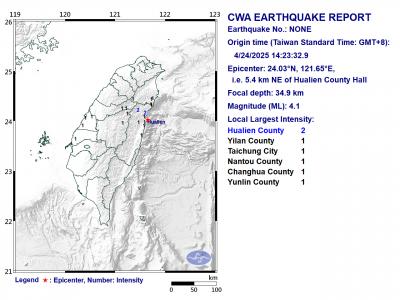Aboriginal rights activists and politicians yesterday clashed with police as they tried to get into the Chinese Nationalist Party (KMT) legislative caucus office to deliver a petition voicing their opposition to the Executive Yuan’s draft Aboriginal autonomy bill.
“[KMT caucus whip] Lin Yi-shih (林益世) come out! Lin Yi-shih, come out!” dozens of Aborigines shouted as they protested outside the KMT’s caucus office.
They were eager to get into the office to deliver a petition to voice their opposition to the draft bill, which they consider a “fake autonomy bill” as it gives Aborigines neither a budgetary increase nor the right to land and natural resources.
Although the caucus office eventually allowed them in, no one was there to take their petition and several protestors with KMT membership threatened to withdraw from the party.
Things went more smoothly when they visited the Democratic Progressive Party (DPP) caucus office, as DPP Legislator Lin Shu-fen (林淑芬) received them and promised to stand with them on the autonomy issue.
Outside the Legislative Yuan, there were hundreds of other protestors.
“We are here to defend our rights,” former DPP legislator Payen Talu of the Atayal tribe told the crowd that represented all 14 officially recognized Aboriginal tribes in the country.
“What good would an autonomy bill do us if it will not give us the right to fully manage our own traditional domains and natural resources within — as the Aboriginal Basic Act [原住民族基本法] promises — and will not allow autonomous regions to receive budgets directly from the central government?” Payen said.
Payen and the demonstrators were upset because the Executive Yuan’s version of the draft bill keeps major decision-making powers in the hands of existing central and local government organizations, leaving mostly culture-related policy-making power to Aboriginal autonomous regions.

Chinese Nationalist Party (KMT) Chairman Eric Chu (朱立倫), spokeswoman Yang Chih-yu (楊智伃) and Legislator Hsieh Lung-chieh (謝龍介) would be summoned by police for questioning for leading an illegal assembly on Thursday evening last week, Minister of the Interior Liu Shyh-fang (劉世芳) said today. The three KMT officials led an assembly outside the Taipei City Prosecutors’ Office, a restricted area where public assembly is not allowed, protesting the questioning of several KMT staff and searches of KMT headquarters and offices in a recall petition forgery case. Chu, Yang and Hsieh are all suspected of contravening the Assembly and Parade Act (集會遊行法) by holding

PRAISE: Japanese visitor Takashi Kubota said the Taiwanese temple architecture images showcased in the AI Art Gallery were the most impressive displays he saw Taiwan does not have an official pavilion at the World Expo in Osaka, Japan, because of its diplomatic predicament, but the government-backed Tech World pavilion is drawing interest with its unique recreations of works by Taiwanese artists. The pavilion features an artificial intelligence (AI)-based art gallery showcasing works of famous Taiwanese artists from the Japanese colonial period using innovative technologies. Among its main simulated displays are Eastern gouache paintings by Chen Chin (陳進), Lin Yu-shan (林玉山) and Kuo Hsueh-hu (郭雪湖), who were the three young Taiwanese painters selected for the East Asian Painting exhibition in 1927. Gouache is a water-based

Taiwan would welcome the return of Honduras as a diplomatic ally if its next president decides to make such a move, Minister of Foreign Affairs Lin Chia-lung (林佳龍) said yesterday. “Of course, we would welcome Honduras if they want to restore diplomatic ties with Taiwan after their elections,” Lin said at a meeting of the legislature’s Foreign Affairs and National Defense Committee, when asked to comment on statements made by two of the three Honduran presidential candidates during the presidential campaign in the Central American country. Taiwan is paying close attention to the region as a whole in the wake of a

A magnitude 4.1 earthquake struck eastern Taiwan's Hualien County at 2:23pm today, according to the Central Weather Administration (CWA). The epicenter of the temblor was 5.4 kilometers northeast of Hualien County Hall, at a depth of 34.9 km, according to the CWA. The earthquake's intensity, which gauges the actual effect of a temblor, was the highest in Hualien County, where it measured 2 on Taiwan's 7-tier intensity scale. The quake also measured an intensity of 1 in Yilan county, Taichung, Nantou County, Changhua County and Yunlin County, the CWA said. There were no immediate reports of damage or injuries.